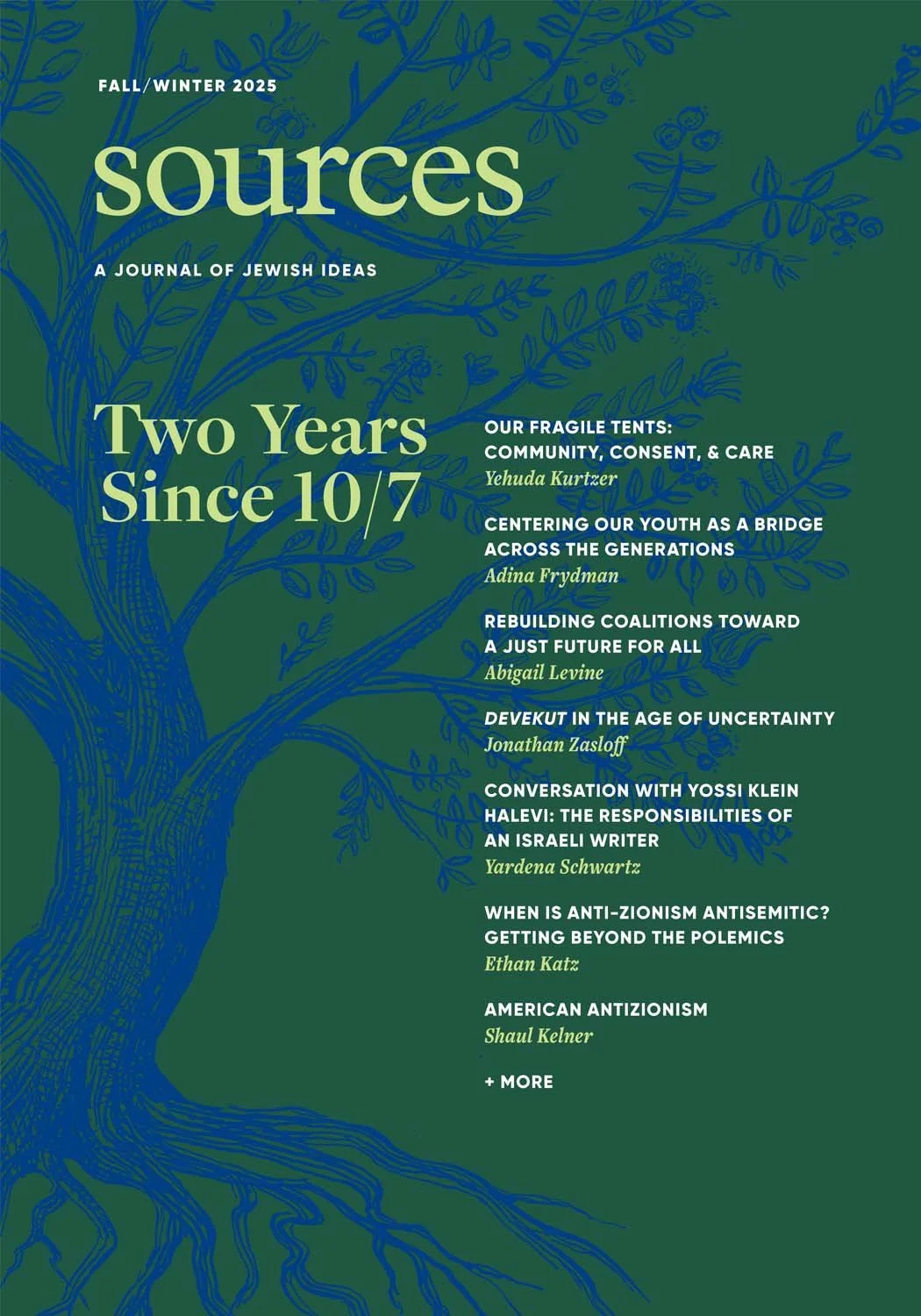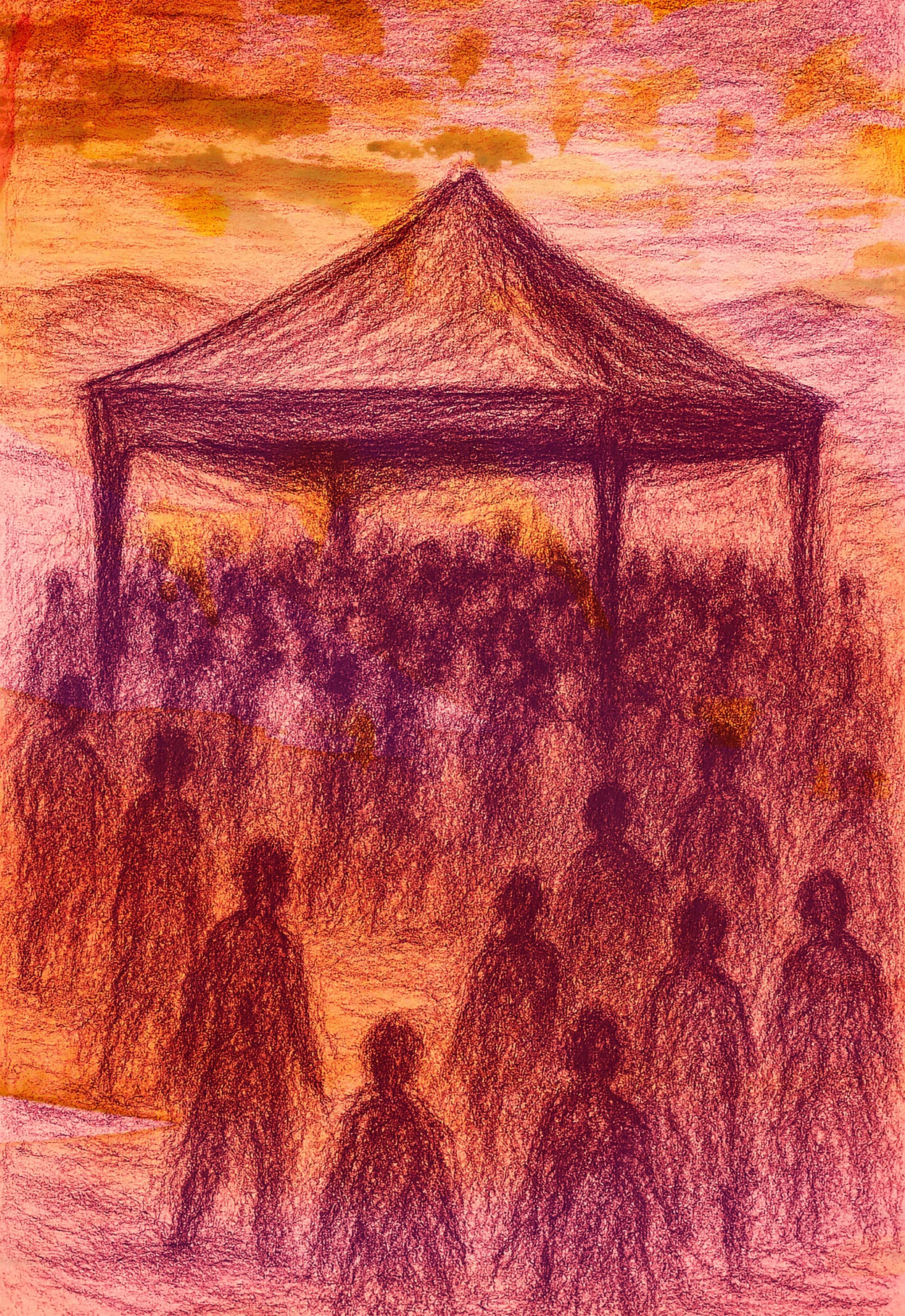Embracing the Jewish Intellectual Tradition
FROM THE EDITOR
Dear Friends:
My love of Judaism as an intellectual project is what led me to say yes, when I was asked, earlier this year, to become the editor of Sources. While I will miss the university classroom—my professional home for the last decade-and-a-half—I am thrilled to continue the work of understanding and furthering the development of Jewish thought in this medium, with partners both new and old.
The Talmud records a conversation between a potential convert to Judaism and Hillel, one of the earliest rabbis. The convert asks to be taught the whole of Judaism while standing on one foot; as readers, we wonder—as did Hillel’s colleague, Shammai—if this is intended as a joke. But Hillel responds seriously, stating a single maxim: “What is hateful to you, do not do to your neighbor,” and then instructing, “That is the whole Torah, while the rest is its commentary; go and learn it” (bShabbat 31a).
When retelling this story, many people emphasize the moral principle that Hillel offers, a form of the Golden Rule. In my view, though, the second part of this passage is equally important. Being Jewish requires moral action and it orients us toward and requires engagement with ideas and what they mean. The two must be interwoven. My favorite line of Pirkei Avot is attributed to the rabbinic sage and Hillel disciple, Ben Bag-Bag: “Turn it over and turn it over, for all is therein” (5:22). The “it” here is Torah, endlessly layered.
Love Jewish Ideas?
Subscribe to the print edition of Sources today.
In his recently published book, Koshersoul: The Faith and Food Journey of an African American Jew—part memoir, part ethnography, part recipe collection—Michael Twitty describes what drew him to Judaism:
I needed a place where learning and relearning were compulsory parts of spiritual and everyday practice. I adored the obsession with getting it right; and love of books, interpretation, and reinterpretation of scripture and texts that took the role of scripture was a habit that would live with me until I was no longer alive. For years I was teased for always being accompanied by an armful or two of books and questioned about my real intentions, as if reading were still illegal for a Black person. Having spent most of my lifetime defending my love of words and books and ideas, I found a home with a people with whom I didn’t have to spend so much energy explaining why an idea occupied so much space in my mind that I had to go over it again and again until it had nothing else to say. I just wanted to be a passionate learner and be respected as the messy and overstimulated autodidact I grew up to be (134).
We can see the sort of Judaism Twitty describes here—Judaism as an intellectual tradition and orientation—begin in the great texts of the rabbinic era as, for example, the Talmud articulates Jewish principles and practices in the form of conversations among rabbis, preserving both majority and minority views; and as collections of Midrash preserve conflicting interpretations of biblical stories. Some have argued that even the pre-Talmudic Hebrew Bible is a multivocal text.
Sources seeks to further this tradition by nurturing and curating a pluralistic conversation about the broad range of issues motivating and perplexing Jews today—the ideas that they find themselves turning over and over. Three times a year, the journal invites readers to step back from the daily, weekly, or even monthly news cycle to take a different kind of look at the world we inhabit. Some articles tackle political issues; others address other needs, be they spiritual, communal, moral, or some combination of all of these. We do not aim to offer easy or final answers but focus instead on deepening our collective ways of understanding and approaching the challenges we face, both individually and communally.
This issue of the journal opens with a political focus: a series of essays addressing the question “Why Israel Now?” Yehuda Kurtzer examines the Zionist movement from a historical angle, highlighting its roots as a liberal nationalist movement and suggesting a potential for renewal within this framework. Masua Sagiv presents the concept of mamlakhtiut, statism, and a model of Israeliness as a national identity separate from the state’s Jewish identity. Donniel Hartman uses biblical conceptions of power to address Israel’s military and diplomatic power in the world. And, in the final piece of this group, Mijal Bitton advocates for ne’emanut, loyalty or faithfulness, as a central Jewish value with the power to drive Zionist commitments.
Together, these pieces, each of them an examination and critique of contemporary Zionism and the relationship between diaspora Jews and the State of Israel, exemplify the Sources approach. Each writer speaks to the question “Why Israel Now?” from a different vantage point and marshals a different set of sources to answer it. Together, they address trends and patterns rather than particular events, making them relevant today and keeping them relevant into the future.
The journal’s next piece considers a pressing social and moral issue: how can a community recover after discovering a sexual predator in its midst? In the #MeToo era, this is a question countless groups are facing; here, a group of scholars affiliated with the Kogod Research Center at the Shalom Hartman Institute of North America discuss Jewish resources for thinking about repentance and rehabilitation. In addition, philosopher Samuel Fleischacker offers a series of meditations on the Shema, likely the best-known Jewish prayer and surely the most often recited, by
Several book reviews, available only online, round out the issue.
I welcome your thoughts and responses to this issue at editor@sourcesjournal.org. If you are interested in writing for Sources, I would love to hear from you at the same address. And if you would like to receive Sources in a beautiful printed edition in your mailbox, I encourage you to subscribe.
With that, I invite you read this issue and to engage with me in the further unfolding of the Jewish tradition.
Claire E. Sufrin
This article appears in Sources, Fall 2022.




